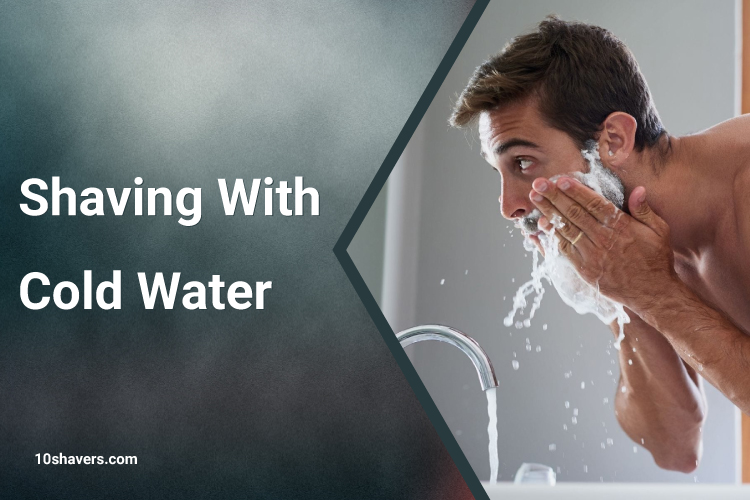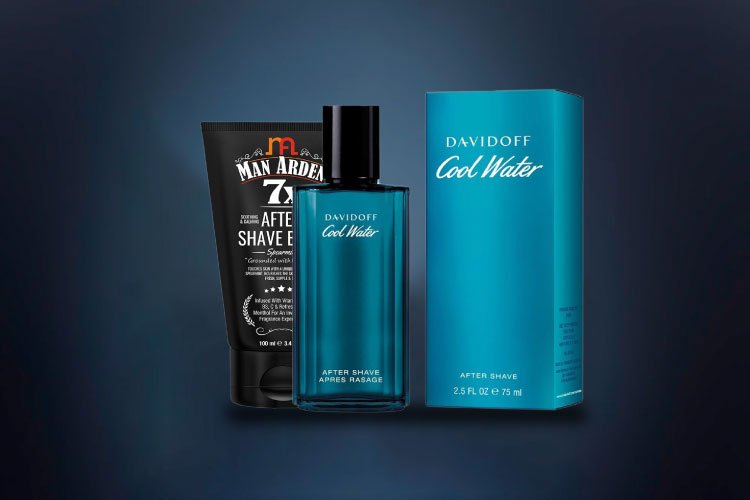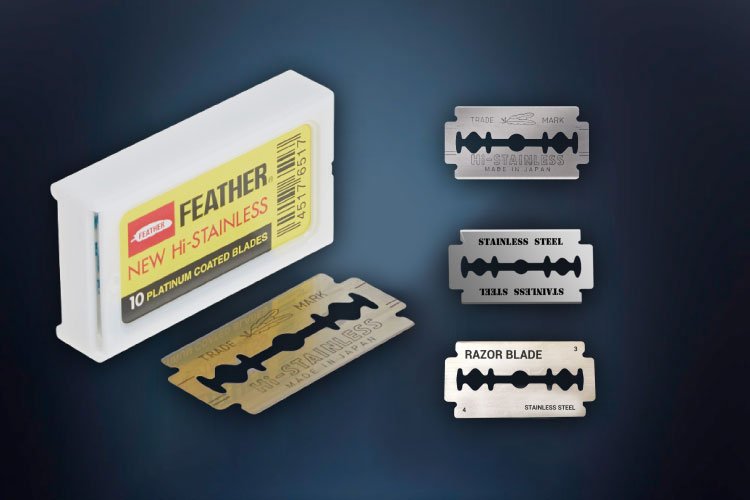Last Updated on January 18, 2024 by David Eisenman
Introduction
Shaving has always been more than just a grooming ritual for me; it’s an experience in itself. I used to stick to the traditional method, using warm water, which I believed was the best way to soften my beard and open up my pores. But then, I discovered something different that goes against the grain of common practice: shaving with cold water.
While exploring this method, I realized that cold water shaving was more than a modern trend. Historically, it was the only option in times and places where warm water was a luxury. What struck me was how this necessity turned into a preference for many, myself included. I learned about the sharp properties of cold water and how it can tighten the skin and pores, offering a smoother shave with a lesser risk of nicks and cuts.
This article is my journey into the world of cold water shaving. I’ve delved into the science behind it and experimented with the art of the cold shave. I’ve discovered numerous advantages, from noticeably reduced skin irritation and inflammation to the energizing and refreshing experience it provides. I’ve gathered practical tips and am eager to share them with fellow shaving enthusiasts and beginners. This exploration into cold water shaving has been a game-changer in my daily routine.
Can You Shave With Cold Water?
Yes, you can shave with cold water, which offers several benefits, although it may seem unconventional compared to the more common practice of using hot water. Hard water shaving is not only possible but also comes with its own set of advantages and considerations.
Cold water can cause the blade’s molecules to contract, which may help extend its lifespan and maintain a sharper edge. Hard water causes blood vessels to constrict, focusing circulation more on vital organs. This effect could boost the immune system.
Cold water can tighten and close the pores, helping to lock in moisture and prevent dirt and germs from entering the skin. Hard water can minimize the risk of burns, bumps, cuts, nicks, irritation, and ingrown hairs for Sensitive Skin.
Cold water makes hair stiff and upright, allowing a closer and cleaner shave. Especially on hot days, hard water shaving can be more electrifying and refreshing. Cold water saves the energy that would otherwise be used to heat water.
What Are The Benefits Of Shaving With Cold Water?
Indeed, some of the most reliable and authentic ways that benefit you to shave with cold water are given below:
Reduced Irritation
Shaving with cold water can lead to less skin irritation. The cooler temperatures help to reduce the heat and friction generated by the razor blade’s movement across the skin. This minimizes the risk of redness, razor burn, and other irritations commonly associated with shaving.
Good For Skin
Cold water is beneficial for the skin in several ways. It can help to refresh and energize the skin, providing a more pleasant shaving experience. Hard water can also help tone the skin, leaving it feeling firmer and restoring post-shave.
Pore Constriction
The application of cold water causes the pores to narrow or tighten. This pore compression can be beneficial during shaving, providing a smoother surface for the razor to glide. It also reduces the likelihood of dirt, oil, and bacteria entering into the pores, which can lead to skin issues like acne.
Less Swelling
Cold water has a natural anti-inflammatory effect, which can help reduce swelling or puffiness of the skin. This is particularly useful post-shave when the skin can be more sensitive and prone to inflammation.
Sebum Control
Using cold water for shaving can help balance Skin sebum production. Warm water can sometimes stimulate excess sebum production, leading to oilier skin. In contrast, hard water can help maintain a more balanced and controlled sebum level, reducing the risk of oiliness and acne.
Pros Of Cold Water Shaving
The practice of cold water shaving comes with several notable advantages:
- Saves Time: Cold water shaving is more time-efficient since it eliminates waiting for the water to heat up. This can be particularly advantageous when you’re in a hurry or prefer a quick grooming routine. Cold water shaving is straightforward, reducing the time spent on pre-shave preparations like warming water or steaming the face.
- Shave Any Time: You can shave with cold water anytime, anywhere, without special arrangements like hot water availability, which is ideal for scenarios like camping or traveling. Hard water shaving offers flexibility even when hot water isn’t available or practical, ensuring you don’t skip your grooming routine.
- Gives a Better And Smoother Shave: Cold water causes hair to stand up straight, allowing for a closer shave as the razor can cut more evenly across the skin. Many find that cold water shaving results in less irritation, as the cooler temperature can help to soothe the skin and reduce inflammation.
- Keeps Skin Clean: Cold water helps tighten the skin and compress pores, which can be beneficial in keeping dirt and bacteria at bay, thus maintaining cleaner skin. Cold water is believed to help regulate oil production on the skin, which can be advantageous for individuals with oily skin types.
Cold water shaving offers various benefits, including time efficiency, convenience, a potentially close shave, and skin health advantages. It’s a practical option for those who seek a straightforward, quick, and less irritating shaving experience.
Cons Of Cold-water Shaving
Why does cold-water shaving have its benefits? There are also some drawbacks to consider:
- Little Discomfort: The initial splash of cold water can shock the system, especially in the morning or more freezing environments. This discomfort can irritate some, making the shaving process less enjoyable. Unlike warm water, cold water does not offer the same soothing and relaxing sensation, often a preferred aspect of the shaving routine for many.
- More complicated Hair: Hot water softens the hair more effectively than hot water, making the shaving process slightly more challenging. Stiffer hair may require more effort to get a clean shave. Due to the hair being more complicated, there’s a possibility of achieving less than a shave as one might with softened hair, leading to missed spots or an uneven finish.
- Not Good For Cold Weather: Shaving with cold water during the colder months can be particularly uncomfortable. The chilly sensation on the face might be too harsh for some, especially in a cold environment. One of the pleasures of shaving, especially in cold weather, is the warmth and comfort of hot water. Hard water shaving lacks this appealing aspect, making it less desirable during winter.
Cold water shaving has advantages, but these drawbacks highlight the importance of considering personal comfort, hair texture, and environmental factors. For those who find these cons significant, alternating between hot and cold water shaving based on circumstances or preference might be a viable solution.
Should I Shave With Hot Or Cold Water?
Whether to shave with hot or cold water depends on various factors, including skin type, hair texture, and personal preference. Below is a detailed comparison of both hot vs cold water shaving methods presented in a table format for clarity:
| Aspects | Cold Water Shaving | Hot Water Shaving |
| Pore & Hair Texture | Tightens skin and pores, hair remains stiff, which can offer a closer shave. | It opens up pores and softens hair, making it easier to cut. |
| Comfort | It can be less comfortable, particularly in winter, but refreshing in warmer weather. | Generally more comfortable and soothing, especially in colder climates. |
| Skin Sensitivity | It is less irritating and better for sensitive skin or those prone to razor bumps. | It can cause more irritation, which is not ideal for sensitive skin. |
| Shaving Experience | Shaving stiff hair requires more effort but can result in a closer shave. | Smoother shave as the razor glides easily over softened hair. |
| Razor Efficiency | Stiff hair stands upright, making it easier to cut evenly. | Soft hair may bend under the blade, potentially leading to uneven cuts. |
| Skin Health | Reduces the likelihood of razor burns and bumps. | This can lead to more razor burns and bumps on sensitive skin. |
| Convenience | No waiting is required; it is more time-efficient. | Requires waiting for water to heat up. |
| Energy Consumption | It is more energy-efficient as it uses cold water. | It uses more energy to heat the water. |
| Ideal For | Those with curly facial hair, sensitive skin, or prone to razor bumps. | Individuals with non-sensitive skin and straight facial hair. |
| Post-Shave Feeling | It is stimulating and refreshing, especially in the morning. | The skin may feel more relaxed and warm. |
If you have sensitive skin or are prone to razor bumps, cold water shaving might be better for you. However, hot water would suit a more soothing and traditional shaving experience. Experimenting with both methods will help you determine what works best for your specific needs and preferences.
Pros Of Hot Water Shaving
Certainly! Here are the advantages of hot water shaving, organized under the provided information below:
- Soften Hair: Hot water softens facial hair, making it easier for the razor to cut through it. Because the hair is softer, the razer can glide more smoothly, reducing the twitching and pulling sensation with stiffer hair.
- Open Pores: Hot water helps open up the pores on the skin, facilitating a deeper skin cleansing before shaving. Open pores allow the hair to stand out more, potentially leading to a closer shave as the razor can reach the base of the hair more quickly.
- Relaxation: The warmth of hot water provides a soothing and relaxing sensation, making the shaving experience more enjoyable. For many, the warm sensation is not just about physical comfort; it also offers relaxation and stress relief.
- More accessible Razor Glide: Hot water creates a more lubricating effect, allowing the razor to glide effortlessly over the skin. With softer hair and open pores, the razor encounters less resistance, reducing the chances of razor burn and skin irritation.
Cons Of Hot Water Shaving
Here are some drawbacks of hot water shaving categorized under the specified descriptions below
- After Dryness: Hot water can strip natural oils from the skin, essential for maintaining moisture. This can leave the skin feeling dry after shaving. Removing these oils can also make the skin more sensitive post-shave, potentially leading to dryness and irritation.
- Risk of Burns: There’s a risk of accidentally burning the skin with too hot water, significantly if the temperature isn’t regulated. Even without actual burns, boiling water can overheat the skin, causing discomfort and potentially worsening conditions like rosacea (long-term redness) or other skin sensitivities.
- Time-Consuming: Using hot water for shaving often requires additional time to heat up to the desired temperature. This process consumes more time and uses more water and energy, which might need to be more environmentally and economically efficient.
While hot water shaving is famous for its comfort and effectiveness, these cons highlight the importance of being cautious with water temperature and considering the after-effects on skin health. Balancing the benefits with these potential drawbacks is crucial to ensure a comfortable and safe shaving experience.
Conclusion
One of the most significant benefits I’ve experienced is reducing skin irritation. The coolness of the water not only soothes the skin but also minimizes redness and razor burn. Moreover, the tightening effect of cold water on the skin and pores has contributed to a more comfortable shave with fewer nicks and cuts.
While it might seem odd, shaving with cold water can be beneficial. The routine involves wetting your face with cold water before applying shaving cream or gel. You should shave carefully using an electric or straight razor to avoid rash and irritation.
Post-shave, it’s important to rinse with cold water, wash off any residue, and then dry with a towel. This method is perfect for those who need to shave at night, as it helps avoid bad skin reactions. The key is to pre-soap your face, ensuring a smooth glide and a refreshing finish.
Another aspect I’ve come to enjoy is the refreshing feeling that cold water shaving provides. It’s a refreshing start to my day, offering a brisk awakening I now look forward to. This practice, initially necessary when warm water was a luxury, has become a preferred method for its simplicity and the speedy, refreshing experience.
My transition to cold water shaving has reaped surprisingly positive benefits. It’s a powerful reminder that the simplest methods can sometimes be the most effective. I wholeheartedly recommend cold water shaving to anyone considering changing their shaving routine. It could transform your experience, as it did mine, making each shave not just a task but a refreshing and invigorating start to the day.




